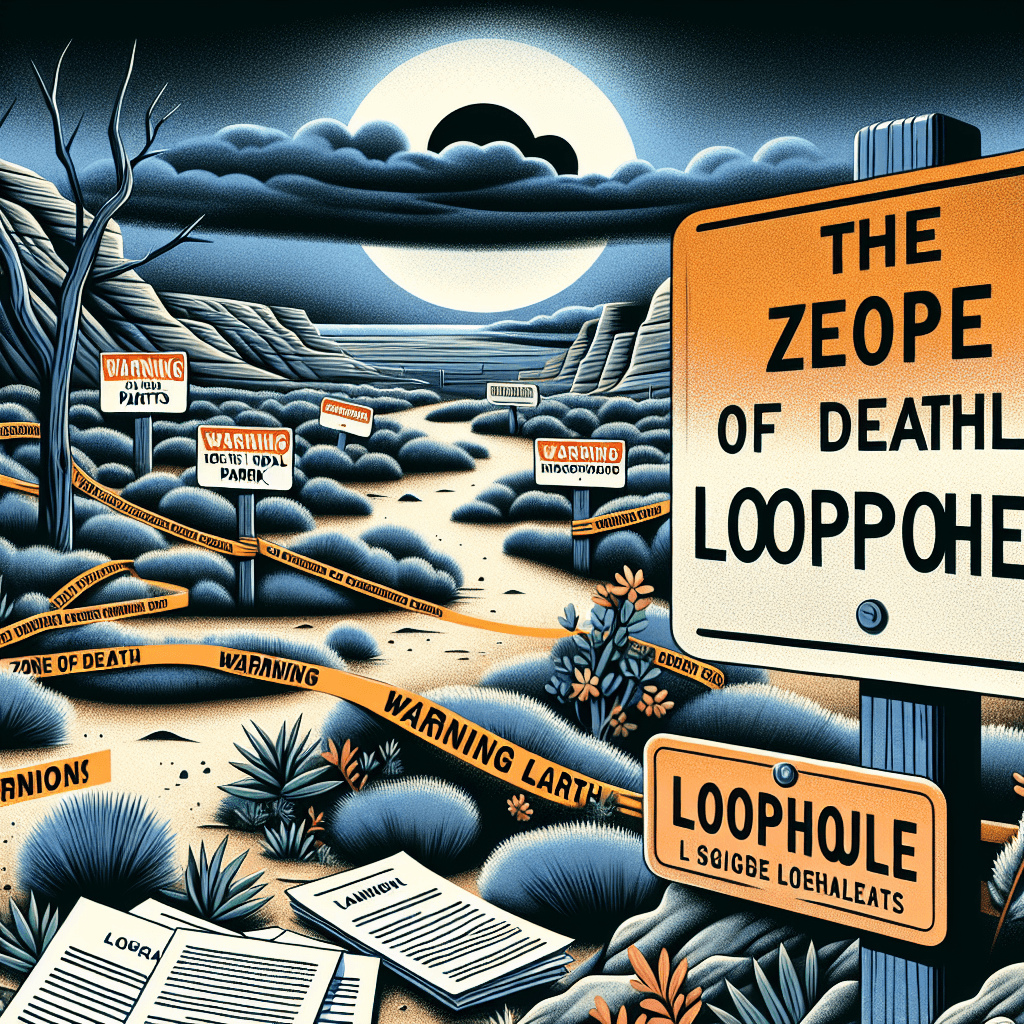Why does a legal loophole create a 'zone of death' in a US national park
Deep within one of America's most beloved national parks lies a 50-square-mile patch of land where, due to a bizarre constitutional loophole, you could theoretically get away with murder.


Too Long; Didn't Read
TLDR: A small, uninhabited part of Yellowstone National Park is in Idaho, but the entire park is under the federal jurisdiction of Wyoming. The Constitution requires a jury from both the state and federal district where a crime occurs. Since no one lives in that Idaho section of the park, it is theoretically impossible to form a jury, allowing a criminal to get away with a crime.
The Perfect Crime? Why a Legal Loophole Creates a 'Zone of Death' in a US National Park
Imagine a place within the borders of the United States, nestled in one of its most famous national parks, where one could theoretically commit any crime and walk away free. It sounds like the plot of a legal thriller, but this isn't fiction. It’s a real-world constitutional curiosity known as the "Zone of Death." This 50-square-mile patch of Yellowstone National Park has become famous not for its wildlife or scenery, but for a bizarre legal loophole that remains unclosed to this day. This post will explore exactly why this legal grey area exists, break down the constitutional clause at its heart, and examine the real-world implications of this fascinating judicial oversight.
A Geographical Anomaly
The "Zone of Death" refers to the specific, uninhabited 50-square-mile section of Yellowstone National Park that falls within the state of Idaho. While the vast majority of Yellowstone's 3,500 square miles are in Wyoming, small slivers of the park also extend into Montana and Idaho.
The problem originates from how Congress established the park's legal jurisdiction. For administrative simplicity, Congress placed the entirety of Yellowstone National Park, including the portions in Idaho and Montana, under the exclusive jurisdiction of the U.S. District Court for the District of Wyoming. This single decision, made long ago, set the stage for a perfect legal storm.
The Sixth Amendment and the 'Perfect Crime'
The entire theory of the "Zone of Death" hinges on a specific right guaranteed by the Sixth Amendment of the U.S. Constitution: the right to a trial by jury.
The amendment's Vicinage Clause states that a defendant is entitled to a trial by "an impartial jury of the State and district wherein the crime shall have been committed."
Let’s break down how this creates the loophole:
- The State: If a federal crime were committed in the Idaho section of Yellowstone, the trial must include jurors from the state of Idaho.
- The District: Because all of Yellowstone is under the jurisdiction of the District of Wyoming, the trial must also include jurors from that federal district.
- The Catch: The 50-square-mile Idaho portion of Yellowstone is completely uninhabited. Zero people live there.
Therefore, it is constitutionally impossible to assemble a jury that meets both criteria. You cannot find jurors who live in the state of Idaho and within the federal District of Wyoming, because no one does. In theory, a defendant could invoke their Sixth Amendment right, and because a constitutional jury could not be formed, a trial could not proceed, potentially allowing them to walk free.
The Theory Meets Reality
This loophole was first brought to public attention in a 2005 paper titled "The Perfect Crime" by Michigan State University law professor Brian C. Kalt. While the argument is legally sound, legal experts agree it’s unlikely to ever be successfully exploited.
A court would likely seek a workaround rather than let a serious offender go free. A judge might argue that in such an extraordinary case, drawing jurors from another part of the district is permissible, or they might try to persuade the defendant to accept a bench trial (a trial by a judge with no jury).
This loophole has never been fully tested, but it came close. In 2005, a poacher named Michael Belderrain illegally shot an elk in the Montana section of Yellowstone, which has a similar (though not identical) jurisdictional issue. His defense intended to use the Vicinage Clause argument, but he ultimately accepted a plea bargain for a lesser charge, leaving the "Zone of Death" theory purely academic.
A Simple Fix, Yet No Action
Professor Kalt has actively lobbied Congress to close the loophole, and the solution is remarkably simple. Congress would only need to pass a law redrawing the jurisdictional lines so that the Idaho portion of the park falls under the District of Idaho and the Montana portion under the District of Montana. Despite the straightforward nature of the fix and the potential gravity of the issue, no legislative action has been taken.
Conclusion
The Yellowstone "Zone of Death" is a captivating example of how legal texts and geographical boundaries can intersect in unforeseen ways. It’s a direct result of the Sixth Amendment's Vicinage Clause clashing with a jurisdictional map drawn for convenience. While it makes for a fantastic story and a compelling legal debate, the odds of it allowing for a "perfect crime" are slim, as our justice system is designed to be more robust than a single oversight. Still, the loophole's continued existence serves as a potent reminder that even in a system of laws centuries in the making, strange and fascinating gaps can still be found hiding in plain sight.


